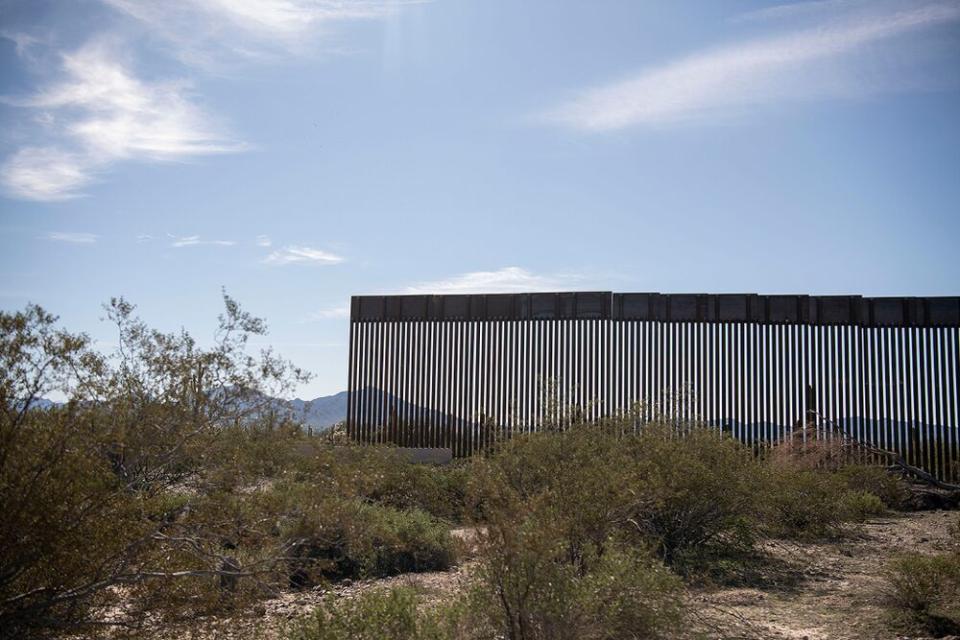Border Wall Construction Is Literally Blowing Up Site of Native American Burial Grounds, Lawmaker Says

An Arizona lawmaker is raising the alarm about the federal government’s U.S.-Mexico border wall construction — which, he said, is literally blowing up the location of sacred Native American burial grounds.
Rep. Raúl Grijalva wrote in a Jan. 7 letter to the Department of Homeland Security that he’d spoken with leaders from the Tohono O’odham Nation tribe who were upset about how the department was moving forward with construction of President Donald Trump’s controversial wall along the Mexican border.
“There has been no consultation with the nation,” Grijalva, 71, told CBS News. “This administration is basically trampling on the tribe’s history — and to put it poignantly, its ancestry.”
Grijalva is the chair of the House Committee on Natural Resources and represents the Arizona district which includes the Organ Pipe Cactus National Monument. In addition to its connections to various tribal groups, the monument is also a UNESCO biosphere reserve, recognizing its ecological importance and rarity — which experts have reportedly said would be threatened by construction.
In his letter, Grijalva urged DHS officials to work more closely with the Tohono O’odham Nation, whose members have been concerned with the possible damage caused by the construction.
“Where they were blasting the other day on Monument Hill [in Oregon Pipe] is the resting place for primarily Apache warriors that had been involved in battle with the O’odham. And then the O’odham people in a respectful way laid them to rest on Monument Hill,” Grijalva said in a Sunday video posted to social media.
In a statement to The Washington Post and other outlets, CBP said that what was happening was “controlled blasting.”
“The construction contractor has begun controlled blasting, in preparation for new border wall system construction within the Roosevelt Reservation at Monument Mountain,” a spokesperson said in a statement. (Monument Hill is also called Monument Mountain.)
“The controlled blasting is targeted and will continue intermittently for the rest of the month,” the CBP spokesperson continued.
An “environment monitor” has also been present, the government said, according to the Post. (The CBP did not respond to PEOPLE’s request for comment.)
“Contractors are building the 30-foot-tall steel wall on the side of the hill [Monument Hill] as part of a 43-mile project on Organ Pipe and the adjacent Cabeza Prieta National Wildlife Refuge,” the Arizona Daily Star reported on Saturday.
Although Trump’s border wall cannot be built on the Native American reservation because it is private land, the burial sites are located on public land right next to the reservation, according to CBS News.
RELATED: Court Gives Trump the Okay to Spend $3.6 Billion in Military Funds on His Mexico Border Wall

Grijalva expressed “serious concerns” in his January letter to the DHS and urged the department to “conduct meaningful government-to-government consultation with the Tohono O’odham Nation about the DHS’s planned border wall construction.”
But Grijalva told CBS last week that he hasn’t heard back.
“There’s been stonewalling, no response for any request,” he said.
Grijalva also wrote in his letter to the DHS that the Trump administration has been “irresponsible” in its powers under a post-9/11 legistlation called the REAL ID Act which allows the skirting of environmental laws in the name of national security.
“This administration continues to use its waiver authority at an unprecedented and irresponsible rate: of the 21 times the waiver has been enacted since 2005, 16 of those instances have occurred in the last two and a half years,” Grijalva wrote.
In the widely shared video posted on his Twitter account on Sunday, Grijalva, a Democrat and Trump critic, said the president “blew up a sacred Native American hill on public land to build his racist wall.”
“Everyone in America should be paying attention to this,” California Sen. Kamala Harris tweeted on Monday. “The ancestries of our Native American communities are being torn apart by this administration, all for a pointless border wall. This is an outrage.”
RELATED: Trump Declares a Sweeping ‘National Emergency’ at the Border to Build His Wall. Now What?
I just got back from the border.
This week, Trump blew up a sacred Native American hill on public land to build his racist wall.
Watch my new update and join the growing movement to stop the wall. #NoBorderWall pic.twitter.com/YgmS94vAwO— Raul M. Grijalva (@RepRaulGrijalva) February 9, 2020
Trump is destroying 200-year-old cactuses, chopping them up like firewood. Yet, he touts his Trillion Trees Initiative. Unacceptable. #ClimateActionNow #NoWall https://t.co/JUNFLDB3lA
— Rep. Barbara Lee (@RepBarbaraLee) February 10, 2020
A report by the Post last year found that the construction of the border wall could damage or destroy up to 22 archeological sites in the region.
“Experts identified these risks as U.S. Customs and Border Protection seeks to fast-track the construction to meet Trump’s campaign pledge of completing 500 miles of barrier by next year’s election,” according to the Post.
The Mexico border wall is a key promise of the Trump administration dating back to his 2016 campaign.
Construction is proceeding after legal fights and a rebuke from Democrats in Congress over funding, which the president circumvented with the use of military money.
“Given that building ‘the wall’ was Trump’s No. 1 campaign pledge, it is no surprise that he has been so obsessed with building it,” Peter Andreas, a border wall historian at Brown University, told PEOPLE in January. “It is still a long way off, so much so that ‘finish the wall’ will undoubtedly be a lead campaign pledge in the next election.”

